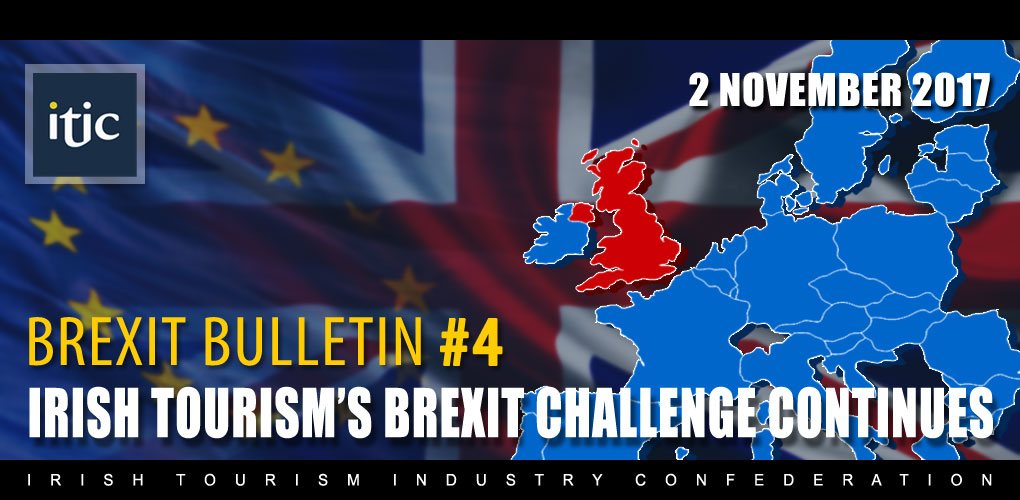
With less than 18 months to Britain’s formal exit from the European Union, business is still in the dark as to the shape of the UK relationship with the EU and by extension with Ireland. As the clock ticks down towards March 29th, 2019, recent developments point to a probable transition period, although the serious negotiations have yet to begin. Five rounds of formal negotiations between the UK and the EU, as long expected, failed to make sufficient progress on key Article 50 issues of citizens’ rights, the Irish border and the financial settlement to allow talks to move on to the UK’s future relationship with the bloc. The hope is that further progress can be made by December to allow talks on a framework for future trade and broader relationship issues to proceed. Meanwhile, internal EU-27 preparations on transition arrangements will get underway. The parallel Westminster debate on the twin issues of the eventual size of a UK divorce bill and a possible no-deal departure risks delaying the negotiating timetable.
The transition period, assuming it is agreed, would appear to avert a ‘cliff-edge’ Brexit, at least, for now. However, the value to business of a transition phase will diminish the longer it takes to define the terms.
From the Irish tourism industry’s perspective the ongoing uncertainty is hurting the value of sterling and consumer confidence. ITIC continues to advocate that any new EU-UK deal provides for:
1. The preservation of the Common Travel Area (CTA) and a soft border;
2. The retention of a liberalised aviation regime between the UK & Ireland, and avoiding the possible risk of disruption of air services.
3. Continued support to the marketing of Ireland as an all-island destination, and facilitation of cross-border visitor traffic flows.
4. Harmonisation of regulatory standards across the island of Ireland, to avoid distortion or unfair competition.


According to the CSO 200,000 fewer British visitors and a loss of upwards of €65 million is the result so far this year to the end of September. Demand to date in 2017 is all the more worrying as visits over the peak months of July and August were down by almost 10% over the same months a year ago. While no official data is available on visitors so far this year from Northern Ireland, anecdotal evidence would suggest a decline of at least 10% which would bring the year to date estimated drop in receipts from the sterling area to close to €100 million.
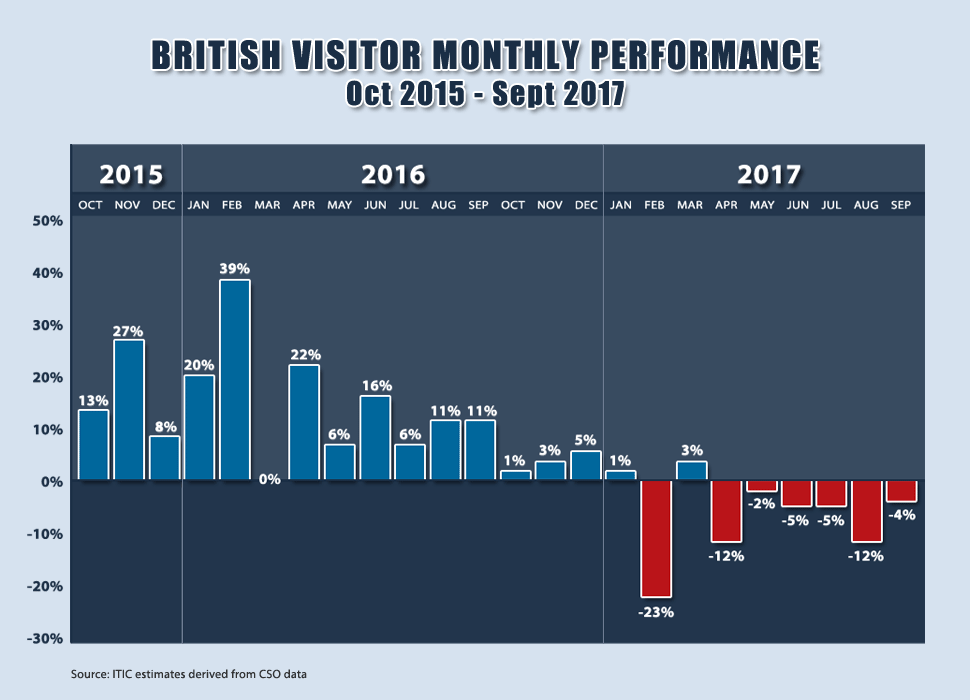
Looking at 2017 as a whole ITIC estimates that the cost of Brexit will be circa €130 million in lost revenue to the sector, not counting the downward pressure on traffic growth from other markets as Britain becomes a more attractive value for money destination.
Ireland’s competitiveness takes a hit
With the fall in the value of sterling Ireland has become less competitive in the British and Northern Ireland markets – key source markets for many hundreds of the country’s small and medium sized tourism businesses. While the impact of the downturn is felt across all parts of Ireland, it is most pronounced in the Border counties and in Dublin – each a particularly attractive and convenient destination for Northern Ireland and British visitors.
A loss of competitiveness in the British market is extremely worrying. Past experiences highlight the damaging impact it can have on businesses across all sectors of the tourism and hospitality industry. Following high inflation in Ireland, unfavourable exchange rates, and recessionary trends in market demand, the annual volume of British visitors fell by almost one third from a peak in 2006 to a nadir in 2012, with the volume of holiday visits collapsing by half over the same period.
Despite the growth in demand over recent years the level of demand has never returned to the 2006 peak. The current downward trend represents a major threat to the industry and requires a strategic response to minimise the damage to businesses and employment.
Ireland losing share of UK outbound market
Trips to Ireland by British residents are falling at a faster rate than other outbound destinations as Ireland loses market share. For the first time in many years the numbers travelling out of Britain actually dipped (-2%) in July, however travel to Ireland was down a sharper 5%. The trend over time shows that visits from Britain to Ireland are in negative territory while the aggregate outbound demand is positive albeit growth slowing.
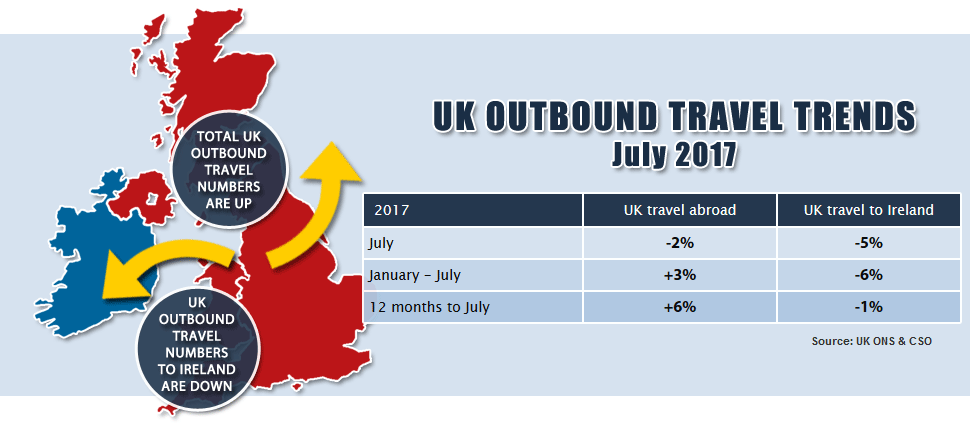
UK outpacing Ireland in tourism growth this year
The UK is enjoying a boom in inbound holiday visitors over the period due largely to the improved value perception based on a weak pound. Inbound arrivals from all destinations into the UK grew by 8% over the first 7 months, compared to 3% growth in visitors to Ireland.
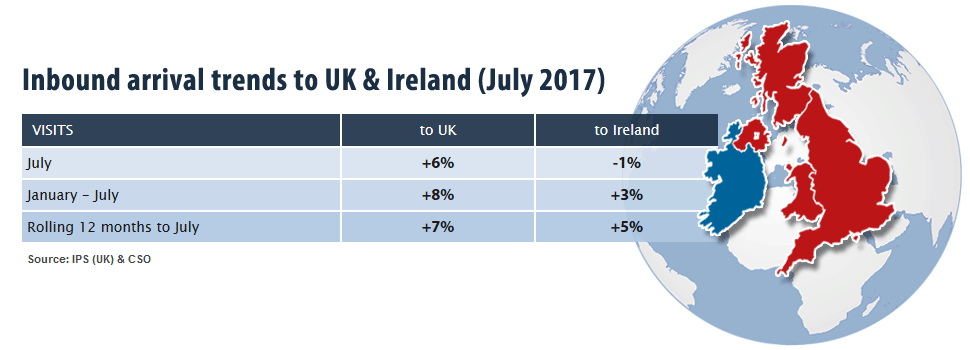
The challenge facing many tourism businesses in Ireland is to remain competitive and promote their product and service actively in the UK market, whilst simultaneously intensifying investment will be required to develop new sustainable growth markets. Disappointingly, the national budget for Tourism Ireland, responsible for marketing Ireland overseas, remained relatively static after last month's Irish Government budget.


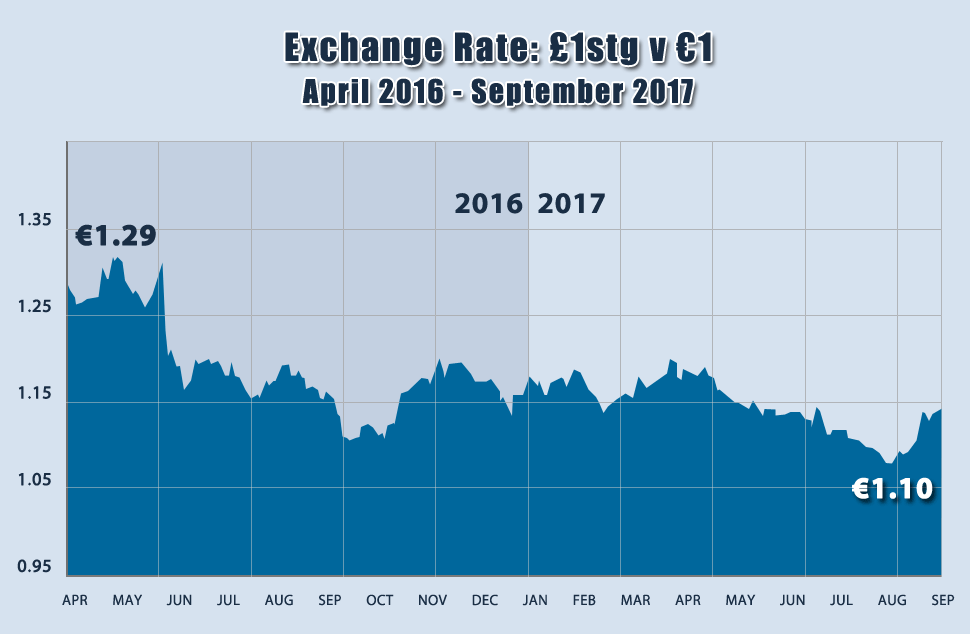


The possible introduction of post-Brexit border formalities between the Republic and Northern Ireland would undoubtedly have a negative impact on tourism flows.
Last year it is estimated that just over 300,000 visitors to Ireland travelled through a port in Northern Ireland, less than 3% total staying visitors. In contrast, almost 500,000, at least two out of every three visitors from outside the UK to Northern Ireland, arrived via the Republic, with the majority enjoying an all-island experience.
Visits from Northern Ireland residents to the Republic are estimated at close to 1.4 million trips spending €367 million, while Republic of Ireland residents travelling in the opposite direction reached 456,000 trips spending £70 million last year.
The Republic enjoys a surplus on cross-border tourist flows, while Northern Ireland is heavily dependent on southern gateways and all-island touring visitors for its international tourists.
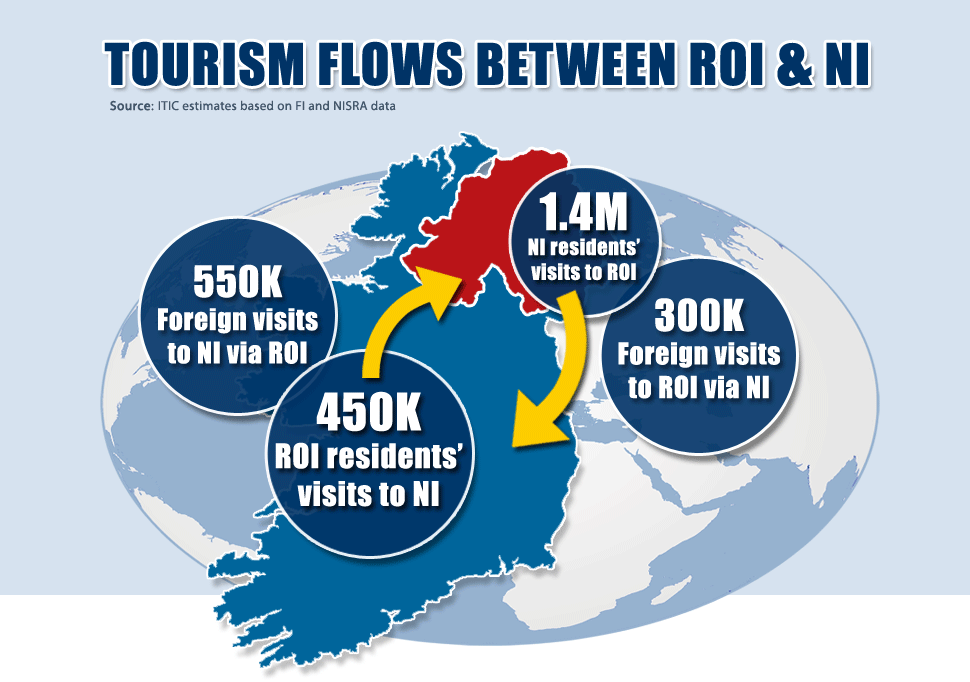
[The data excludes day trip flows in each direction, including the growth in day trips by international visitors from Dublin to Titanic Belfast and Giant’s Causeway.]
While there have been aspirations and various suggestions for a soft or frictionless land border, a firm proposal has yet to emerge from Westminster. A key deciding factor on the post Brexit border will be whether the UK remains in the Customs Union or a special EU status is accorded to Northern Ireland.
Any physical border on the island of Ireland would undoubtedly have implications for tourist flows, if only a perceived barrier, in turn acting as a deterrent to seamless all-island travel currently enjoyed by visitors and residents.
The introduction of new controls on the movement of people between the UK and Ireland, including the land border, would have serious consequences for the travel and tourism industry.
The maintenance of the current Common Travel Area is seen as a priority to the industry’s sustainable growth.


Vital UK-Ireland air links
Air service links between Ireland and the UK are vital to the country’s economy, and most especially to tourism. The air link between the two countries is by far the most used route of entry for visitors to Ireland.
3.3 million visitors arrived on flights from Britain last year, almost two out of five visitors to the country. The air connection between the two islands was the preferred means of travel for 75% of British visitors, while 21% of North Americans and 32% of visitors from other long haul markets connected to Ireland on a flight from Britain. The air corridor between Britain and Ireland handles 156 flights each day, providing 22,000 seats in each direction. A total of 54 routes are operated by 5 airlines linking 23 airports in Britain and 6 Irish airports. The Dublin-London route alone is the second busiest route globally.

Potential disruption to the EU’s single aviation market
The most damaging prospect of a ‘no deal’ could see air services severely disrupted. Unlike most other sectors there are no World Trade Organisation agreements other than old bi-lateral agreements to fall back on in the event of a ‘no deal’. Industry insiders are of the view that the transition period will encompass the continuation of the EU-wide liberal open skies aviation regime allowing uninterrupted intra-European and transatlantic flights to and from the UK. Likewise current agreements on air traffic control and other security and safely aspects of commercial aviation will remain in place at least for the period of transition.
For the status quo to remain in place for a period of transition, agreement will be required as the EU will insist that any transition prolong the acquis (i.e., all existing laws), and the jurisdiction of the European Court of Justice (ECJ), but without British participation in EU institutions.
Several airlines have made contingency plans to ensure continued operations. UK based easyJet secured an EU operating license (AOC) in Austria, while Wizz, Eastern Europe’s biggest discount airline, is setting up a U.K. arm and London-based Thomas Cook Group Plc is establishing a division in Spain.
A key priority in the negotiations needs to be an arrangement that will see the continuation of a liberal air regime between the UK & Ireland without interruption to services. From a commercial perspective clarity on the regime governing air transport after March 2019 is required by March 2018 to allow airlines to plan schedules 12 months in advance.


The continued retention of the 9% VAT rate on the tourism and services sector, announced in Budget 2018 to address uncertainty about the outcome of the Brexit process in tourism sector, is welcome. The 9% rate is in line with the majority of European destinations and helps to allow the sector remain competitive.
While Fáilte Ireland recently announced a series of informational and advisory services for businesses exposed to the impacts of Brexit, the supports available to tourism businesses pale in comparison with the portfolio of state supports available to other export sectors. Regrettably the tourism sector does not appear to be a priority as a Brexit exposed export sector, despite upwards of €6.5 billion annual export earnings supporting over 230,000 jobs and contributing €1.5 billion in taxes to the Exchequer.
In Budget 2018 the Government announced a further series of measures to assist export sectors deal with the threats posed by Brexit. The specific new measures, in addition to a range of supports already in place through agencies under the aegis of the Minister for Business, Enterprise and Innovation and the Minister of Agriculture, Food and Marine, include:
- New €300m low-cost Brexit Loan Scheme for Business to provide affordable financing is open to all trading SMEs and large firms employing less than 500. The Exchequer will provide €23 million to the scheme to be delivered by the SBCI through commercial lenders.
- €3m for additional Brexit-related staff for State Agencies - Enterprise Ireland, IDA, SFI, and HSA - doubling additional posts to 100 in 2018 to ensure a joined-up response to Brexit.
- Brexit Response Loan Scheme for Agri-food Sector- a further €25 million in addition to the Brexit loan scheme outlined above (of which minimum 40% is available to food businesses),
- €50 million additional supports for Food sector, including Capital Investment and increased resources for Bord Bia’s marketing and promotion activities.
At this stage, and with evidence mounting of the serious Brexit impact on the Irish tourism industry, it is high time that the supports on offer to other export sectors are extended to tourism without delay.


A reminder: what the UK market was worth in 2016
- 41% of all visitors = 3,632,000
- 22% of tourist receipts = €1.11 billon
- 32% of holiday visitors = 1,423,000
- Visitors from Northern Ireland
- Number of trips: 1,358,000
- Value: €367m
- Total income from sterling spending visitors: €1.48 billon
|
Source: Fáilte Ireland: Tourism Facts 2016

|
